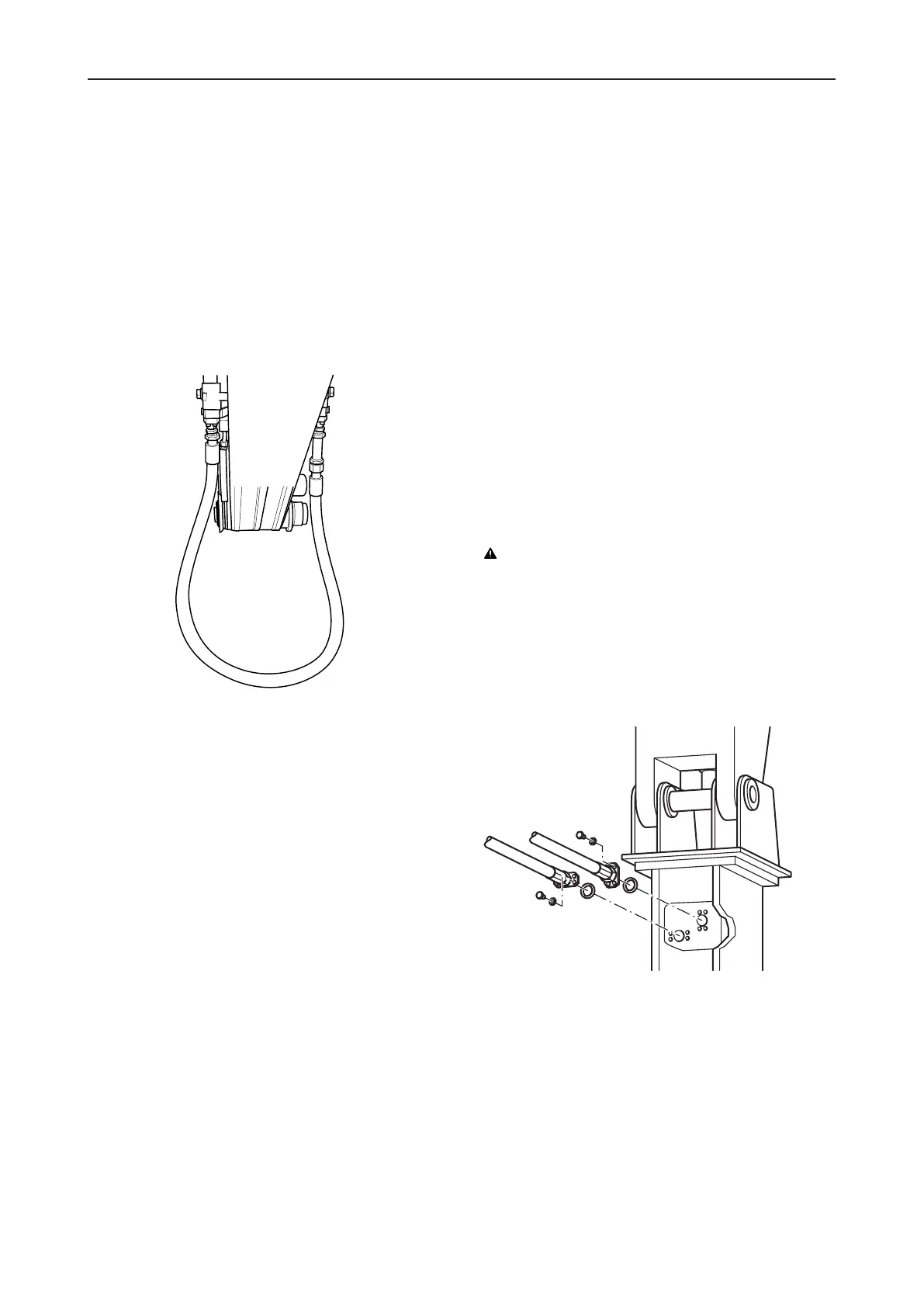Safety and operating instructions
© Construction Tools GmbH | 33905146 01 | 2019-09-05
Original Instructions
27
NOTICE Total damage to the hydraulic attachment
Polluted hydraulic lines and connections may enable
sand, fragments of material and dirt to penetrate the hy-
draulic attachment and damage it completely.
u Clean the hydraulic lines and connections before
connecting the hydraulic hoses. Lay all hydraulic
hoses so that they are torsion-free.
n
Install the pressure and tank hoses.
n
Connect the pressure and tank hoses.
n
If no quick couplings are used, open the shut-off
valves in the installation at the boom.
n
Switch on the carrier.
n
Let the hydraulic oil run through the carrier oil filter for
approx. three minutes to make sure that the hoses
are clean.
n
Switch off the carrier.
n
Depressurise the hydraulic system according to the
manufacturer's safety and operating instructions for
the carrier.
n
If no quick couplings are used, close all shut-off
valves in the installation at the boom.
n
Disconnect the pressure and tank hoses.
5.4.2.1 Flange connection
n
Unscrew the blind flanges from the ports »P« and
»T« and save them for future use.
n
Check that the ports and connections on the hy-
draulic breaker and/or on the hydraulic hoses are not
damaged.
n
Replace any damaged connections.
n
Grease the O-rings of the connection flanges with
ParkerO-Lube and install them.
n
Fit a pair of lock washers onto every fastening screw.
n
Attach the flange of the pressure hose to port »P«,
using the fastening screws and making sure it is tor-
sion-free.
n
Attach the flange of the tank hose to port »T«, using
the fastening screws and making sure it is torsion-
free.
WARNING Hydraulic hose flailing about
Pressurised hydraulic hoses will flail about if a bolted
connection comes loose or becomes loosened. A hy-
draulic hose flailing about may cause serious injuries.
u Tighten the fastening screws with the right tightening
torque.
Tightening torque (see chapter Bolt connections /
Tightening torques).
